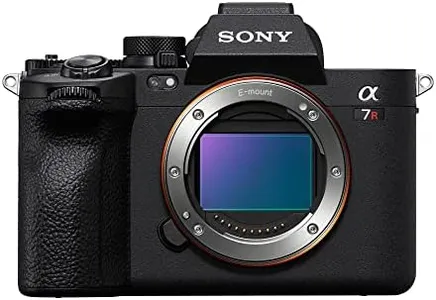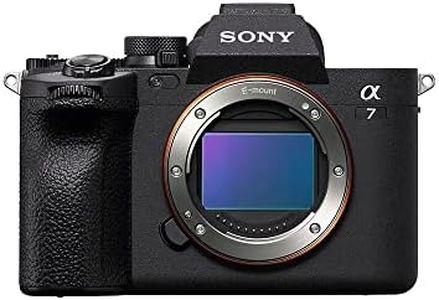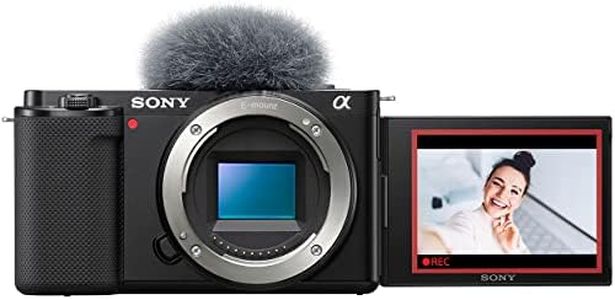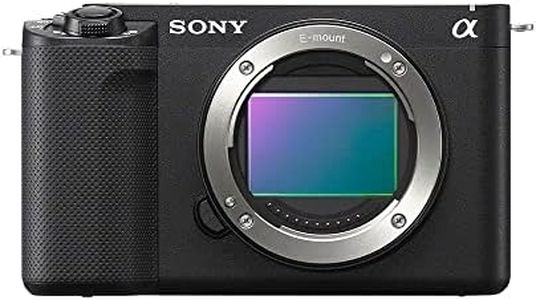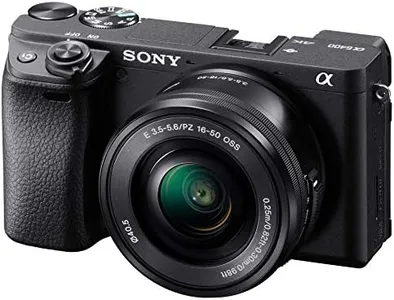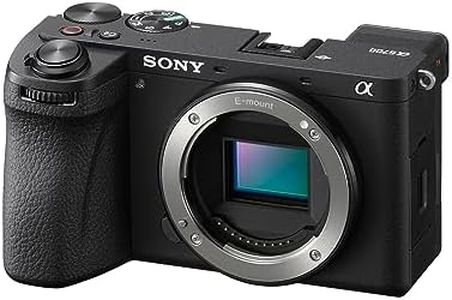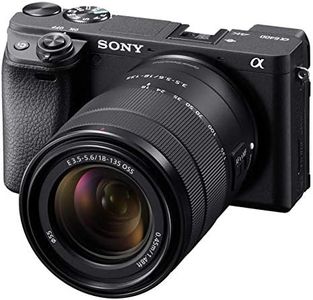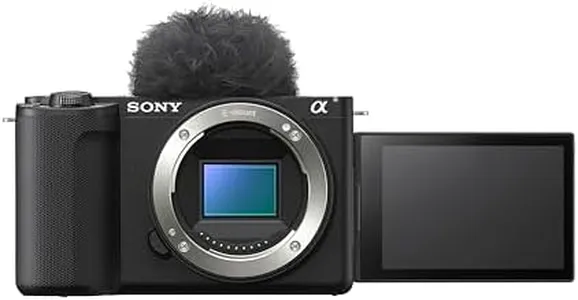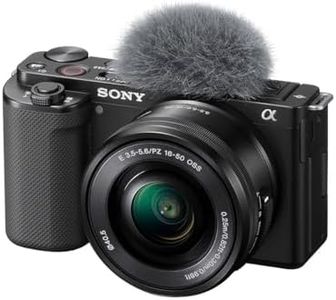We Use CookiesWe use cookies to enhance the security, performance,
functionality and for analytical and promotional activities. By continuing to browse this site you
are agreeing to our privacy policy
10 Best Sony Mirrorless Cameras
From leading brands and best sellers available on the web.By clicking on a link to a third party's website, log data is shared with that third party.
Buying Guide for the Best Sony Mirrorless Cameras
Choosing the right mirrorless camera can significantly improve your photography experience. Before making a purchase, think about what you like to shoot—portraits, landscapes, sports, travel, or video—as your needs will determine which camera features are most important. Pay attention to the balance between portability, image quality, and user-friendliness. Also, consider how the camera feels in your hands and if the lens system offers room to grow with your skills and interests.Sensor SizeSensor size refers to the physical dimensions of the camera's image sensor. This spec is important because it strongly influences image quality, especially in low light, and affects how much background blur you can get in your photos. The most common sensor sizes in mirrorless cameras are Full Frame and APS-C. Full Frame sensors are larger and deliver better low-light performance, more dynamic range, and a shallower depth of field. APS-C sensors are slightly smaller, leading to more compact and lightweight cameras, and often make telephoto lenses more effective for distant subjects. If you care most about maximum image quality and low-light performance (like for portraits, events, or serious landscapes), Full Frame might suit you best. For travel, casual photography, or if you prefer a lighter camera without sacrificing too much quality, APS-C can be a great choice.
Megapixel CountMegapixel count measures the resolution of the camera's sensor, which translates to the size of images you can produce. While higher megapixels mean more detail and the ability to crop or make large prints, they also result in larger file sizes and sometimes more noise in low light. Cameras under 24 megapixels are great for sharing online, casual use, or street photography. Cameras from 24 to 33 megapixels offer a good balance for most people, delivering high detail without overwhelming storage needs. Above 33 megapixels is best for professionals or anyone planning to print very large photos or crop heavily. Choose the megapixel count based on how you plan to use your pictures—for most, mid-range resolutions are more than enough.
Autofocus SystemThe autofocus system determines how quickly and accurately the camera focuses. It’s measured by the type and number of focus points, as well as how well it tracks moving subjects. Basic autofocus is fine for still subjects, while advanced systems with fast subject tracking and many focus points are better for sports, wildlife, or active kids and pets. If you shoot mostly stationary subjects or simple scenes, basic or mid-range autofocus will work. For action, events, or unpredictable movement, look for advanced autofocus options.
Video CapabilitiesVideo capabilities describe the camera’s ability to shoot movies, including resolution (such as 4K or 1080p), frame rates, and extra features like slow motion or eye autofocus. If you mainly take photos, standard video specs will suffice. If you want to create high-quality video, look for 4K recording, higher frame rates, and tools like microphone inputs or in-body stabilization. Choose based on your interest in video—basic for occasional clips, advanced for vlogging or creative projects.
Image StabilizationImage stabilization helps reduce blur from shaky hands and allows you to use slower shutter speeds before photos get blurry. Some cameras have this built into the body (in-body stabilization), and others rely on stabilized lenses. If you often shoot handheld, in low light, or want to avoid carrying a tripod, image stabilization is valuable. For mostly tripod-based or studio work, it’s less critical. Pick based on your shooting style and how often you’ll need steady shots.
Viewfinder and LCD ScreenThe viewfinder and LCD screen are what you use to compose and review your photos. Electronic viewfinders (EVFs) vary in size and resolution, affecting how clearly you can see your scene, especially in bright sunlight. Some LCD screens tilt or flip, which can make shooting from awkward angles or vlogging easier. Basic viewfinders and fixed screens are fine for most situations, but if you often shoot in bright light or from creative angles, a high-quality EVF and a flexible LCD will be more useful.
Battery LifeBattery life tells you how many photos or videos you can take on a single charge. Mirrorless cameras generally have shorter battery life than traditional DSLRs. If you plan to shoot for long periods without charging, like on trips or all-day events, longer battery life is helpful. For short shoots or if you don’t mind carrying spare batteries, this is less of a concern. Think about when and where you’ll be shooting to decide how important battery life is for you.
Lens CompatibilityLens compatibility refers to the range of lenses available for the camera body you choose. Some systems have more options for wide-angle, telephoto, macro, or specialized lenses. This is important if you plan to explore different styles or need certain lenses for your subject matter. If you want to experiment or specialize, ensure the lens lineup matches your future interests. For casual use, a kit lens or two may be all you need.
Size and WeightThe physical size and weight of the camera affect how comfortable it is to carry and use, especially during travel or long shoots. Smaller, lighter cameras are easy to bring along and less tiring to hold. Larger bodies often offer better handling and more controls. If portability is key for you—like for travel or hiking—choose a compact, lightweight option. If you prefer a solid grip and more direct controls, a bigger camera might be more comfortable.
